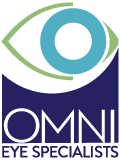Do You Know the Warning Signs of Cataracts?
January 26, 2024
Cataracts are one of the most common age-related eye conditions. They form when your eye's natural lens, which is supposed to be clear, becomes cloudy.
You may think of cataracts as affecting only older adults, but just being over 40 puts you at higher risk for cataracts. Many people develop cataracts in their 40s.
However, because they can take years to develop fully, you may not notice you have them at first. When cataracts do begin to cause symptoms, they can be hard to recognize since they start to appear so gradually.
This is why seeing an eye doctor regularly is vital so you can have your cataracts diagnosed and monitored in their early stages. It's also helpful to recognize the signs and symptoms of cataracts.
Keep reading to discover the warning signs of cataracts and if you may have them!
Blurry Vision
 The most common and well-known symptom of cataracts is blurry vision. As cataracts develop, your natural lens gets cloudier and cloudier, making it harder to see through.
The most common and well-known symptom of cataracts is blurry vision. As cataracts develop, your natural lens gets cloudier and cloudier, making it harder to see through.
Think of your lens as a window and a cataract as fog on the window. If you're trying to look through the window, the fog makes everything on the other side much more challenging to see.
When you have cataracts, blurry vision significantly affects your ability to see clearly. Your vision can become blurry for several reasons, and this cataract symptom is often mistaken for worsening vision and other conditions like presbyopia.
Presbyopia occurs when your natural lens loses flexibility, making it more challenging to see things up close. If you have presbyopia, you may find doing things up close harder, like reading, using your phone to text, or reading a menu at your favorite restaurant.
But if cataracts cause blurry vision, getting a stronger prescription for your glasses won't improve your ability to see. When stronger prescriptions no longer improve your vision, that's a good sign that you could have cataracts.
Halos and Glare
Cataracts affect light, making light sources appear to have a halo around them. They also intensify glare, especially from bright lights in an otherwise dark environment.
The more advanced your cataracts are, the more intense glare and halos become. You may notice that driving at night becomes more challenging due to halos and glare around streetlights or from oncoming traffic.
Find out if it could be time for cataract surgery.
Light Sensitivity
Light sensitivity goes hand in hand with halos and glare. Bright lights can be hard to look at, and their glare can be blinding. If your eyes are becoming more sensitive to light, it could be because you have cataracts.
Poor Night Vision
Cataracts make it harder to see in low light. This can make driving at night especially difficult, combined with the issue of light sensitivity and intense glare.
Headlights from other cars and street lamps at night can make it hard to keep your eyes open while driving. No longer being able to see well at night makes it harder to see.
If you struggle driving at night, it's a good sign you may have cataracts. Poor vision in low light is also sometimes mistaken for presbyopia, which many people with cataracts also have.
Presbyopia makes it harder to focus up close, so reading or doing other fine-focus tasks is more challenging. But it can also be hard to do these tasks if you have cataracts because you need more light to see what you're doing.
If you find that more light makes it easier to complete fine-focus tasks, that's a sign that your issue may at least be partly due to cataracts.
Bright Colors Appear Muted and Yellowish
Cataracts make colors appear more yellowish and washed out. This symptom is particularly hard to notice since it worsens slowly over time.
But a good indication that you may have cataracts is if you have trouble telling similar colors apart. Cataracts also make it harder to see objects against similarly colored backgrounds.
If you struggle to see color contrast, it could be because you have cataracts.
Double Vision in One Eye
Most symptoms of cataracts only appear if you have significantly developed cataracts. However, one of the earliest signs of cataracts that patients often experience is monocular double vision, more commonly known as double vision in one eye.
If you see double when closing one eye, even faintly, it could be because you have cataracts, even if you haven't experienced any other symptoms yet.
Note that binocular double vision, or double vision in both eyes, is not a sign of cataracts. If you have double vision in both eyes, it can be a sign of a severe neurological problem!
If you see double when both eyes are open, you should see your primary care physician or a neurologist as soon as possible. Seeing double could be a sign of something more concerning. Finding out the root cause is the best solution.
Learn More About Cataract Surgery
Schedule a Cataract Consultation!
Cataract Surgery
 The only way to treat cataracts is by having cataract surgery. Other methods like using brighter light, getting stronger glasses, or investing in anti-glare sunglasses are only temporary methods of improving vision impacted by cataracts.
The only way to treat cataracts is by having cataract surgery. Other methods like using brighter light, getting stronger glasses, or investing in anti-glare sunglasses are only temporary methods of improving vision impacted by cataracts.
Eventually, cataracts get to a point where these methods will no longer work or help. Cataract surgery removes cataracts and the eye's natural lens.
The natural lens is then replaced with an intraocular lens (IOL). The IOL ensures you see clearly after cataract surgery.
Because cataracts take so long to develop, cataract surgeons only recommend cataract surgery if cataracts affect your quality of life. If you can no longer do the things you love, or even basic things like cooking for yourself or doing laundry because of cataracts, it could be time to consider cataract surgery.
When you experience the warning signs of cataracts, you're likely close to needing cataract surgery. Do you think you may need cataract surgery?
Schedule your cataract evaluation at OMNI Eye Specialists in Baltimore, Rosedale, Glen Burnie, Catonsville, and Parkville, MD, to learn more! There's a beautiful world out there, so why see it with cataracts if you don't have to?



